Prevent Rose Diseases
Despite of prophylaxis,
it is not always possible to prevent rose diseases, but it must not end in
disaster if you do the right things first
When roses sometimes get sick, it usually looks more dramatic than it is. Just pay closer attention to the flowers than you normally do. Pruning and keeping the rose bushes tidy on a regular basis will avoid most troubles.
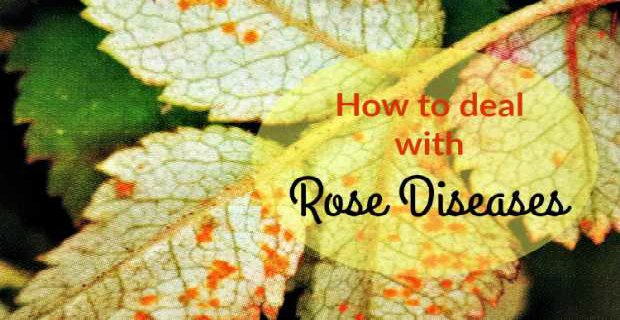
In addition, much can be done to
make the roses strong enough to resist unwelcome attackers.
Prevention is Better than Cure Rose Diseases
This saying applies especially to rose diseases. Make sure your roses do well from the start, and you've already done a lot for their health.
The following suggestions should simply fit:
- Buy robust and disease resistant roses
- Choose the right location for you flowers
- Care for constant soil moisture, loosened soil and balanced fertilization
- Avoid overhead watering; keep the leaves dry
Hygiene is essential to keep the flowers healthy. Ensure the roses get as little as possible in contact with germs and pests. The following methods are helpful:
- Cut withered blossoms, wild shoots and damaged plant parts regularly and dispose of everything
- Dispose of infected plant parts and rose-cut into the garbage can; don't compost them!
- Before applying winter protection, tidy up the rose bushes; remove foliage, hips and withered blooms and dispose of it
- Cultivate useful animals
What to do in Urgent Matters
Check your roses for infestation with diseases and pests every time when it comes to regular rose-care. Usually it is enough to cut the effected plant-parts and dispose them into the garbage-can.
Only when diseases occur to a greater extent, you should hark back to plant protection products. Use eco-friendly products to preserve bees and helpful animals.
Tip from the Garden-Pharmacy
Common Horsetail Broth to prevent fungal diseases
Soak 1kg fresh, minced or 150g dried herb in 1lt water for 24 hours. Boil the broth and let it simmer for 30 minutes. Cool it and water it 1:10. Spray your plant from the start of bud-swelling every 2-3 weeks.
Fungal Diseases at a Glance
Black Spot
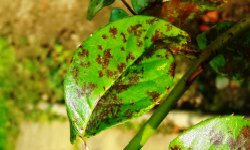 |
Circular black spots and yellowing foliage is the indication for that disease. Read more about Black Spot... |
Powdery Mildew
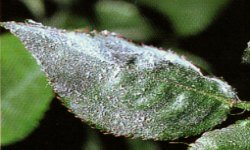 |
Cool, damp nights and the following hot, dry days provide perfect conditions for powdery mildew. Read more... |
Downy Mildew
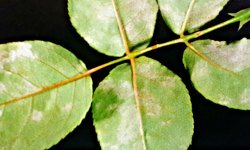 |
Reddish-purple spots form at the surface of the leaves, at the underside a whitish-gray fungus lawn occurs. Read more... |
Rust on Roses
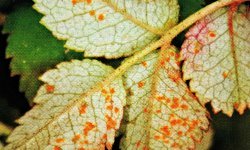 |
In case of infestation with rust on roses yellowish to brownish spots will form on the leaves. Read more... |
Other Rose Diseases and Disease Patterns
Rose Balling
|
Buds do not open fully and the petals become brownish. Read more about Rose Balling... |
Iron Deficiency
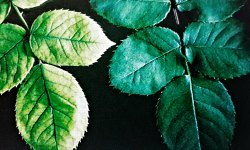 |
On calcareous soils with high pH value, frequently iron deficiency occurs. Read more... |
Rain Spots
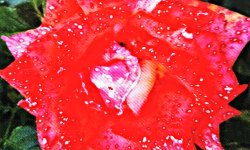 |
The symptoms occur mainly after short periods of rain. It is not a disease. Read more... |
Some rose varieties are more prone to problems than others, but robust and resistant roses that grow strongly can usually survive any infestation, provided you act quickly.
Good garden hygiene will avoid the occurrence of many diseases. Regularly clear up any plant debris and burn or dispose everything.
Physiological Damages
Time and again we meet conditions on the foliage and shoots in the Rose Garden neither caused from disease nor from pests. To mention the three important ones:
Jaundice (Chlorosis), Sunburn and Blind Shoots
 Chlorosis
Chlorosis





New! Comments
Have your say about what you just read! Leave me a comment in the box below.